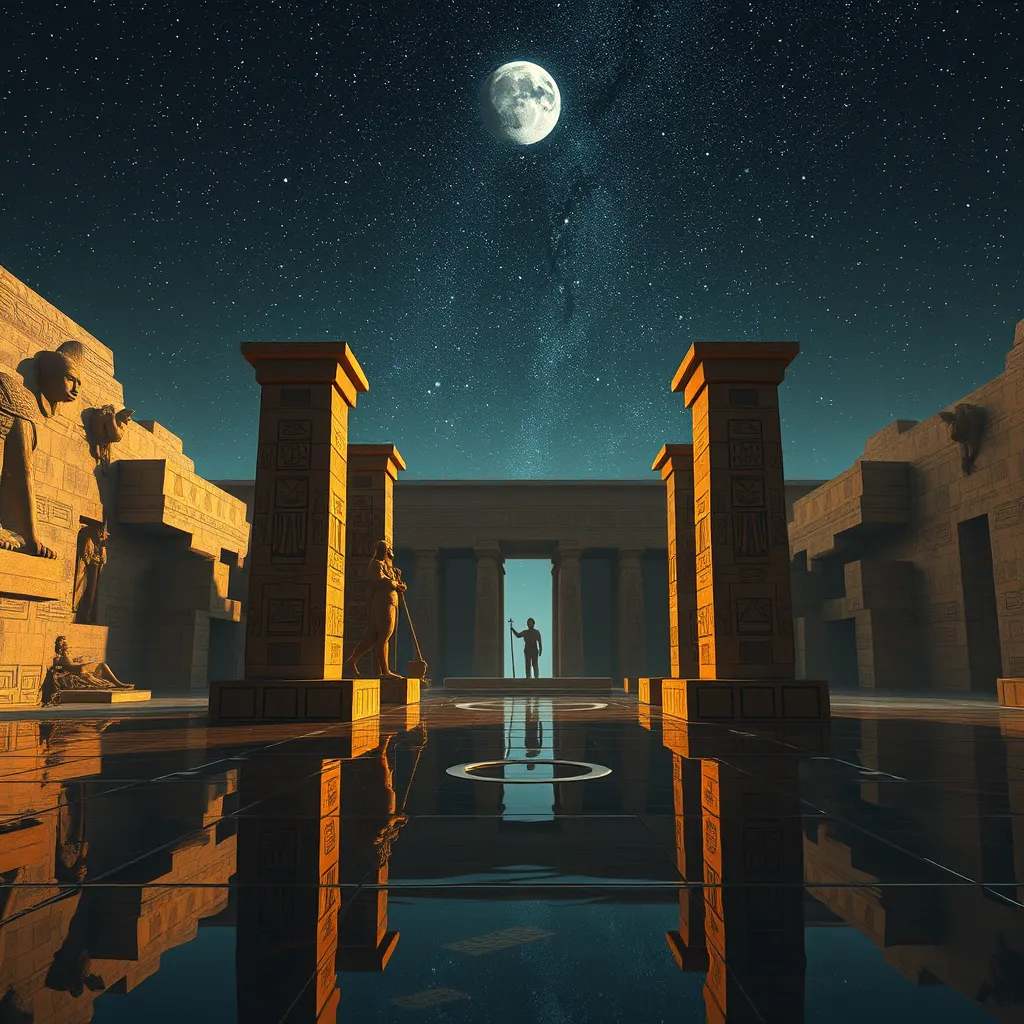The Duat: A Reflection of the Human Condition
I. Introduction
The Duat, in Ancient Egyptian mythology, represents the realm of the dead and the afterlife. This mystical landscape is where souls journey after death, encountering various challenges and trials as they seek eternal life. Understanding the Duat is crucial for grasping the complexities of Ancient Egyptian beliefs about death, morality, and the human experience.
The Duat not only serves as a backdrop for the afterlife journey but also reflects the human condition in profound ways. It encapsulates the fears, hopes, and moral struggles individuals face throughout their lives, making it a significant topic for exploration.
II. The Concept of the Afterlife in Ancient Egyptian Beliefs
Ancient Egyptians held a complex belief system regarding death and the afterlife. They viewed death not as an end but as a transition into another realm of existence. The journey through the Duat was seen as essential for achieving eternal life, which was the ultimate goal for the deceased.
The journey through the Duat consisted of several stages, each filled with challenges that the soul had to overcome. These stages included:
- Crossing the waters of chaos
- Facing monstrous creatures
- Meeting various deities for judgment
The significance of the Duat extends beyond mere mythology; it highlights the Ancient Egyptians’ views on morality and the importance of one’s actions in life, which ultimately determined their fate in the afterlife.
III. Symbolism and Imagery of the Duat
The Duat is rich in symbolism and imagery, often depicted as a dark, winding realm filled with various landscapes, such as lakes of fire, fields of reeds, and eerie underworld landscapes. Each element within the Duat has a specific meaning and contributes to the overall narrative of the afterlife journey.
Key symbols associated with the Duat include:
- The Ankh: A symbol of life and immortality.
- The Scarab: Representing regeneration and transformation.
- Ma’at: The concept of truth, balance, and order, personified as a goddess.
These symbols mirror human fears, such as the fear of death and the unknown, as well as hopes for resurrection and eternal life. They encapsulate the aspirations for a just and moral life, emphasizing the interconnectedness of existence.
IV. Moral and Ethical Dimensions of the Duat
One of the most critical aspects of the Duat is the weighing of the heart against the feather of Ma’at. This judgment scene is pivotal in determining the fate of the deceased. The heart, representing the individual’s deeds and moral character, is weighed against the feather, which symbolizes truth and justice.
The implications of moral conduct in life are profound; those who lived justly and adhered to the principles of Ma’at would find their hearts light, allowing them to pass into the afterlife. Conversely, those whose hearts were heavy with wrongdoing faced dire consequences.
This system of judgment and accountability reflects the human experience, emphasizing the importance of ethics and the impact of one’s actions on their destiny.
V. The Duat as a Metaphor for Personal Struggle
The challenges encountered in the Duat can be seen as metaphors for the real-life obstacles that individuals face. Just as the deceased must navigate the treacherous landscapes and confront fears in the Duat, people in their lives must confront personal struggles and adversities.
The significance of perseverance and resilience is underscored in this journey. Overcoming trials in the Duat represents personal transformation and growth, encouraging individuals to face their fears and emerge stronger.
Ultimately, the Duat serves as a powerful reminder that struggles can lead to personal evolution and enlightenment.
VI. The Duat in Contemporary Culture
In modern literature and art, the Duat has been reinterpreted and reimagined, influencing various narratives surrounding life, death, and the human experience. Writers and artists often draw upon the imagery and symbolism of the Duat to explore themes of mortality and existence.
The influence of the Duat is also evident in contemporary discussions about existential questions. It prompts reflections on one’s legacy, the meaning of life, and the journey each person undertakes.
As society grapples with the concept of death and the unknown, the lessons from the Duat remain relevant and thought-provoking.
VII. Lessons from the Duat for Modern Humanity
Insights from the Duat provide valuable perspectives on mortality and the human condition. It encourages individuals to reflect on their lives, the choices they make, and the legacy they leave behind.
Understanding the importance of memory and how one is remembered after death is a key takeaway from the Duat’s teachings. It emphasizes that while life may be fleeting, the impact one has on others can endure.
Ultimately, the Duat informs our understanding of life’s journey, urging us to live with purpose and integrity.
VIII. Conclusion
In summary, the Duat holds significant relevance in reflecting the human condition through its rich mythology and moral teachings. It offers a unique lens through which to understand the complexities of life, death, and the afterlife.
As we explore the beliefs of the Ancient Egyptians, we find that ancient wisdom continues to resonate in our modern world. The Duat invites us to consider our values, the legacies we create, and the eternal journey we all undertake.
For those intrigued by these themes, further exploration of the Duat and its meanings can enrich our understanding of ourselves and our place in the universe.




